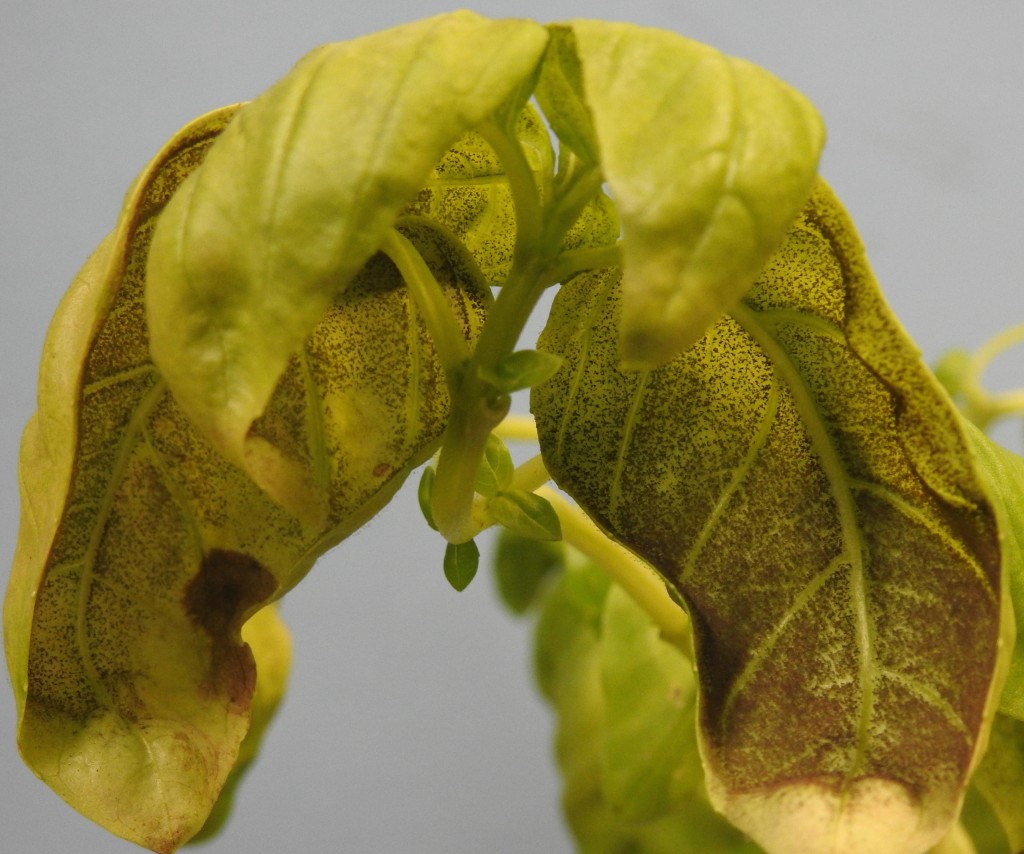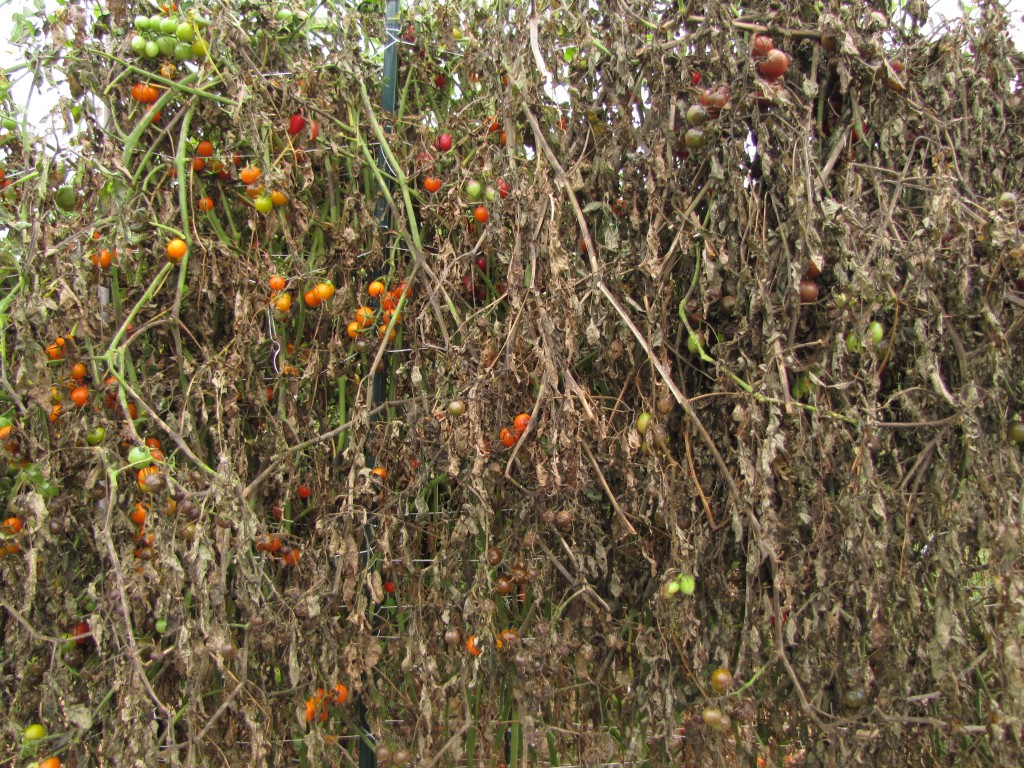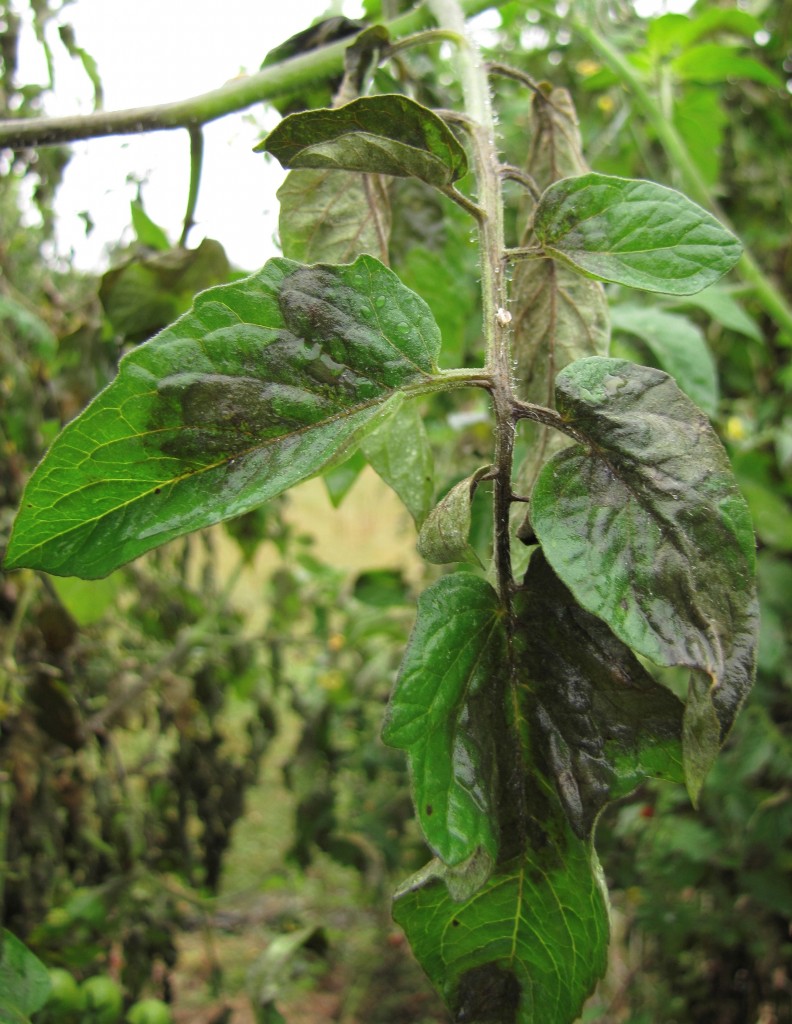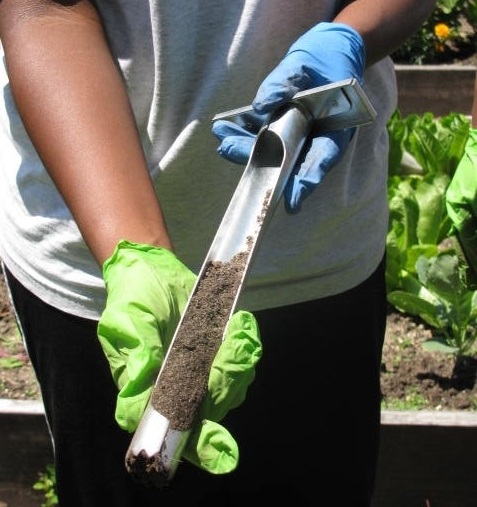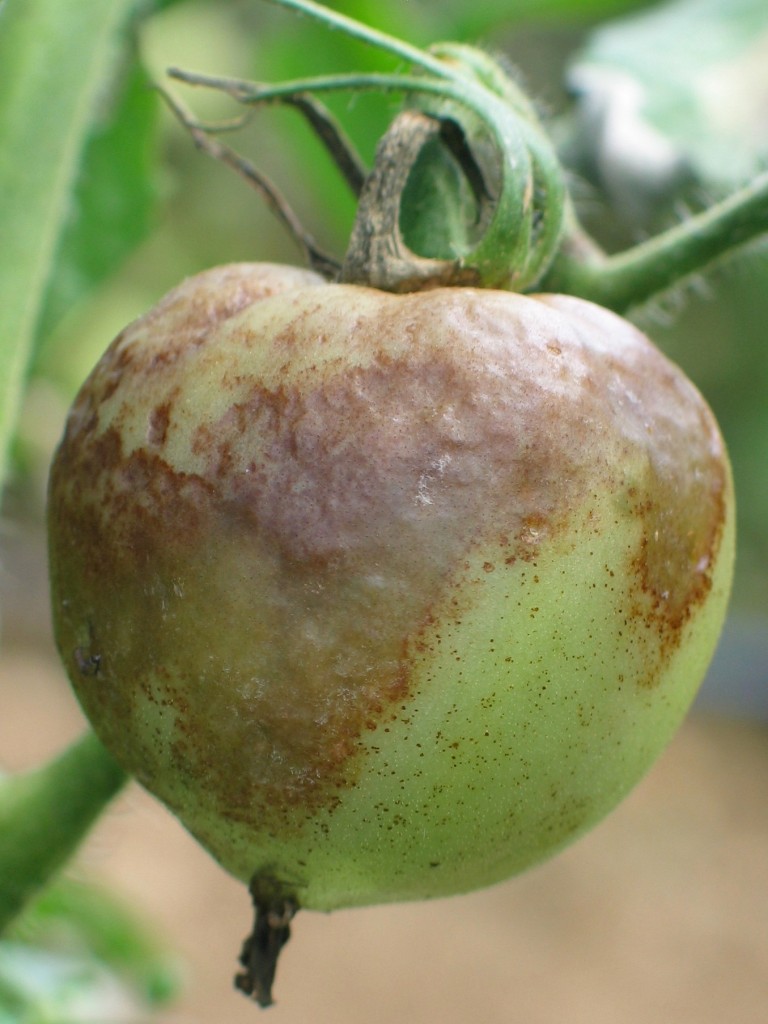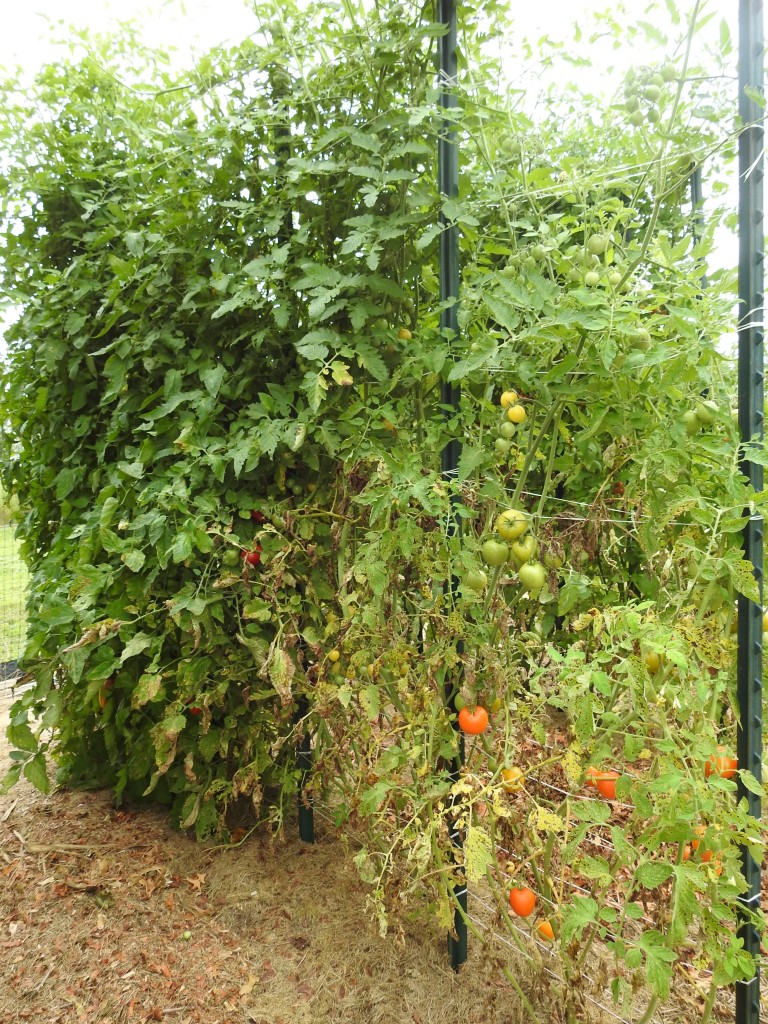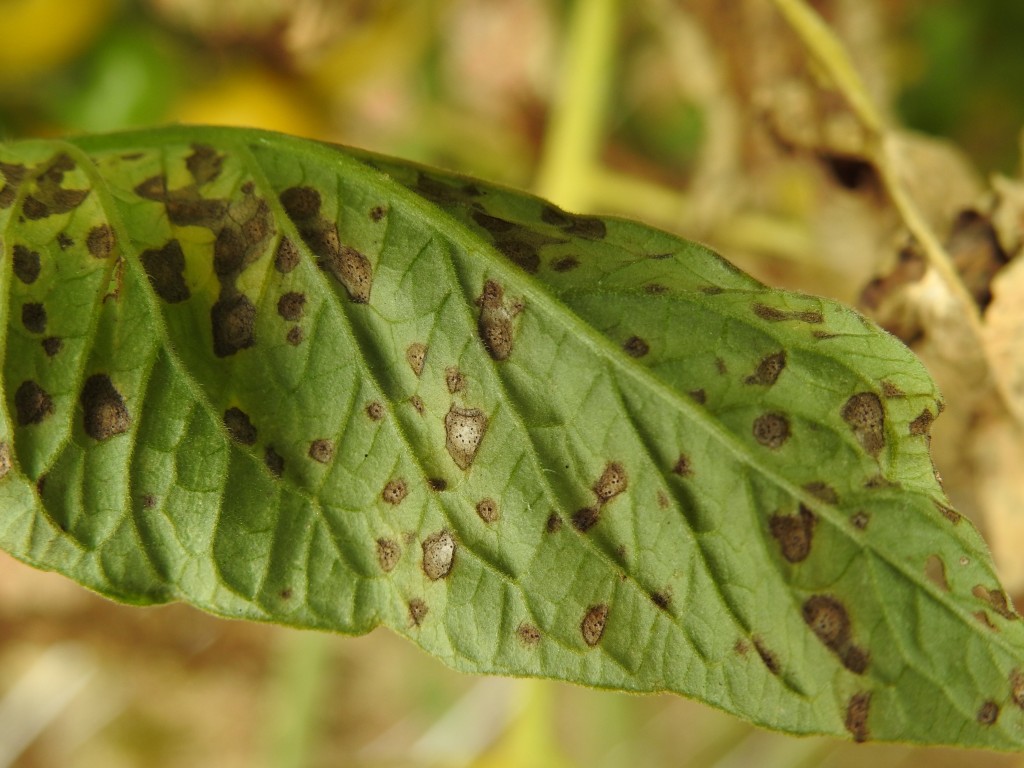If your basil leaves have turned yellow and display a dark-brown sooty growth on their underside, then your plants have downy mildew, a regularly occurring disease on Long Island since it first appeared here in 2008. Click on the photo gallery on my Vegetable Pathology – Long Island Horticultural Research & Extension Center webpage to look at pictures of diseased basil to help determine if your herbs are affected.
There’s also lots of information about basil downy mildew on my webpage at Cornell Vegetable MD Online. If you’d like to log a report of your diseased basil to help me with a study on basil downy mildew, click here at Basil Downy Mildew Monitoring Records 2016. And for a national perspective about where it has appeared in the United States, visit Where in the USA is Basil Downy Mildew? This is a good web reference to visit in the future to learn when other gardeners are starting to find the disease on Long Island and elsewhere, too.
Downy mildew is hard to manage in basil plants. My recommendation for gardeners is to grow basil in pots and not expose them to high humidity (above 85%) which the pathogen requires to be infectious. Low humidity can be maintained by keeping plants indoors overnight and on rainy days. For more information, visit my webpage How Gardeners Can Manage Downy Mildew in Basil.
Starting in late July, I grow my second planting of basil in pots because downy mildew typically begins developing for me on Long Island during August. Also, since basil is very cold sensitive, bringing plants into a warm house overnight maintains basil quality when night temperatures start dropping to below 55F.
If your basil is still green and healthy, consider yourself lucky and go knock on wood! And then drop me an e-mail. Cheers!
Dr. Meg McGrath is Associate Professor at Cornell University’s Long Island Horticulture Research and Extension Center in Riverhead, New York, where she conducts research and extension activities to help farmers manage diseases.

